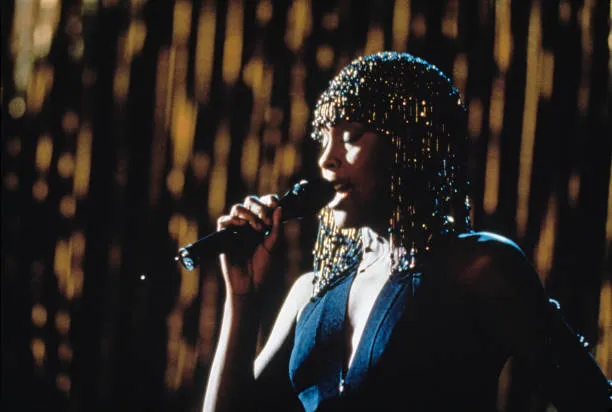In 1973, John Lennon found himself at a crossroads, both personally and professionally. After the breakup of The Beatles and a series of tumultuous years with Yoko Ono, Lennon decided to take a break from the hustle and bustle of New York City. This year became known as his "Lost Weekend," a period of about 18 months that was anything but lost in terms of creativity and personal growth. A significant part of this time was spent in Beverly Hills, California, where Lennon experienced a blend of freedom, excess, and introspection that would influence the rest of his life.
The Break from Yoko Ono

By 1973, John Lennon and Yoko Ono's marriage had reached a point of intense strain. The couple had been inseparable since they met, but their relationship was beginning to show cracks under the pressure of public scrutiny and their own personal challenges. The decision to separate was mutual, with Yoko suggesting that Lennon take some time away to figure things out. This separation marked the beginning of Lennon’s "Lost Weekend," a period where he moved to Los Angeles and later settled in Beverly Hills.
During this time, Lennon began a relationship with May Pang, who had been working as his and Yoko’s personal assistant. Yoko had encouraged the relationship, believing it would help Lennon find some peace and clarity away from their intense partnership. Pang accompanied Lennon to Los Angeles, where they immersed themselves in the city’s vibrant music scene.
Beverly Hills: A New Playground

Settling into a rented home in Beverly Hills, Lennon found himself in an environment very different from the one he had known in New York. Beverly Hills, with its sun-soaked streets, glamorous lifestyle, and proximity to Hollywood, offered a sense of freedom that Lennon hadn’t experienced in years. The move was also symbolic of Lennon’s attempt to escape the pressure cooker of New York and the intense media spotlight on his relationship with Yoko.
In Beverly Hills, Lennon embraced a lifestyle that was both liberating and indulgent. He became a regular at parties thrown by celebrities and music industry insiders, many of whom were eager to welcome a Beatle into their midst. These gatherings were often wild, filled with the excesses of the early 1970s, including plenty of alcohol, drugs, and late-night jam sessions. Lennon, who had always been an introvert in public but wild in private, threw himself into this new lifestyle with gusto.
The Wild Side: Nights at the Troubadour

One of the most infamous episodes of Lennon’s time in Beverly Hills was his legendary night at The Troubadour, a famous club in West Hollywood. On this particular evening, Lennon, along with singer-songwriter Harry Nilsson, decided to attend a show by the Smothers Brothers. The night quickly spiraled out of control as Lennon, heavily intoxicated, began heckling the performers. At one point, he even wore a sanitary napkin on his head, leading to his ejection from the club.
This incident, while embarrassing, was also emblematic of Lennon’s state of mind during this period. He was a man unmoored, trying to find himself in a world that offered few real answers. Despite the chaos, Lennon’s time in Beverly Hills was also a period of intense creativity. His relationship with May Pang provided a sense of stability, even as he navigated the excesses of the Los Angeles lifestyle.
Musical Rebirth: The "Walls and Bridges" Sessions

Amid the chaos of Beverly Hills, John Lennon’s creativity was far from dormant. In fact, this period was incredibly productive for him. During his time in California, Lennon began working on new music, much of which would eventually be featured on his 1974 album, Walls and Bridges. The album is often seen as one of Lennon’s most introspective works, reflecting the emotional turbulence of his life during this time.
Songs like "Nobody Loves You (When You're Down and Out)" and "Scared" captured the loneliness and fear that Lennon felt as he navigated his life without Yoko. Yet, there were also moments of hope and resilience, as evidenced by tracks like "#9 Dream." This album, recorded partly in New York after his return from Beverly Hills, was deeply influenced by the experiences and emotions Lennon encountered during his time on the West Coast.
The Legacy of Lennon’s Beverly Hills Year

John Lennon’s time in Beverly Hills in 1973 is often remembered for its excesses, but it was also a period of profound personal growth and artistic development. It was a time when Lennon confronted his demons, explored new creative avenues, and ultimately found his way back to the things that mattered most to him.
The music he created during this time, particularly the Walls and Bridges album, stands as a testament to his ability to channel personal turmoil into art. Lennon’s experiences in Beverly Hills may have been chaotic, but they were also an essential part of his journey as an artist and as a human being.
For fans of Lennon, 1973 offers a fascinating glimpse into the life of a man who was constantly evolving, always searching for meaning, and never afraid to confront the darker sides of his own personality. It was a year that shaped the final years of his life and left an indelible mark on his legacy as one of the most influential musicians of the 20th century.



